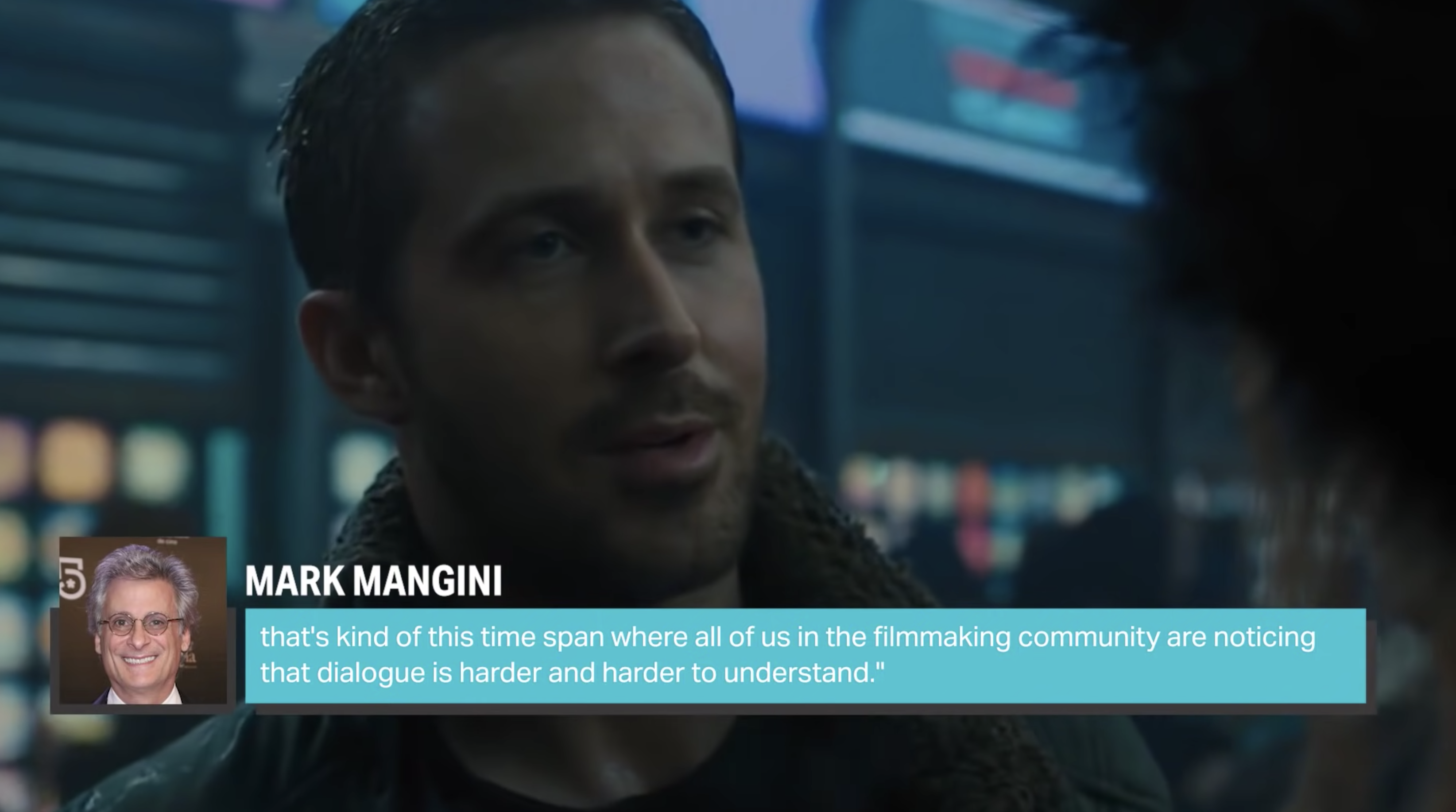I’ve been complaining about all-but-unintelligible movie dialogue for several years now, and the almost uniform response from the HE commentariat has been that it’s mostly my fault — my hearing isn’t what it used to be so I need to get a hearing aid and blah-dee-blah.
That may be true to some extent but movie dialogue has nonetheless been increasingly hard to understand over the last decade or so, and it’s absolutely not entirely my fault.
According to Slashfilm’s Ben Pearson and an absolutely historic article that I was too distracted to read until today, a good amount of the blame is on actors, mixing boards, theatre sound systems, Chris Nolan, etc.
Please accept my humble, bended-knee apology for overlooking Pearson’s piece, titled “Here’s Why Movie Dialogue Has Gotten More Difficult To Understand.”
And please read it, and then watch the video.
Pearson says the chief culprits are (a) Chris Nolan, who has made a fetish out of mixing his films so you can barely hear the dialogue, (b) self-conscious actors who deliver “soft, mumbling, under-their-breath delivery of some lines,” (c) a lack of respect for sound recording during principal photography, (d) too many digital tracks resulting in de-prioritizing dialogue, (e) mixing for cinemas vs. mixing for streaming.
One thing Pearson doesn’t mention is vocal-fry murmur, which Millennial and Zoomer actresses began to project back in the early teens. I first wrote about the vocal-fry plague eight years ago.

All I know is that I’m really looking forward to watching Tar at home with subtitles — something tells me this will be transformative.

